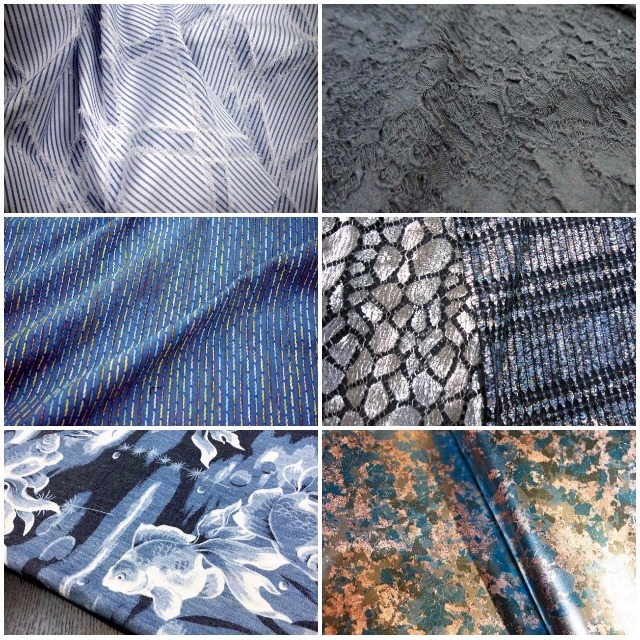
Hokkoh
Indigo-Gradation-Discharge print of 100% cotton denim,
using a stencil with a fine design
Hokkoh Co., Ltd. aims to expand its print presentation, in Japanese, retro and geometric designs that take their cue from Hawaiian shirts, and pursue a wide range of sales channels from womenswear to menswear.
The materials exhibited by Toko Shoji are exemplified by printed fabrics that have been Terax processed, a technique developed by affiliate company Toko Limy Co., Ltd. The company will extend its sales into the European and American market on the back of functional materials that will respond to heat or cold according to the season.

Kyoto Leather
Multi-coloured cowhide made with traditional Japanese techniques and designed to represent infinite space
Kyoto Leather Co., Ltd. has combined its uniquely-developed paste with Yuzen dyeing techniques, and used domestic cowhide, incorporated with traditional Japanese techniques such as printing, marbling, foil, tie dye and plant dye, to develop treated leather as part of efforts to increase interaction with European and American brands.
In striving for patterned designs that involve the application of multiple techniques, including washable treatment, Kyoto Leather has developed a new process wherein firstly, a design is printed, after which, another dye is sprayed over the top, and finally, the sprayed-on dye is partially scraped off. The pattern underneath is hidden from sight, but the unique way in which the leather changes over the years reveals another, deeper design to enjoy. The company is strengthening its line-up of high-quality leather that has both uniqueness and value.
As these companies continue to exhibit their wares year after year, their exports to Europe and the United States are stabilising and continuing to grow, thanks to the “establishment of the Japanese system of developing long-term partnerships with clients and thereby being able to provide prompt delivery of products” (Hokkoh).
There is also an emerging trend of “an increasing number of repeat customers of luxury brands” (Uni Textile). These companies are using unique Japanese techniques while strengthening efforts to develop materials that support the individualisation and differentiation of the brand, thereby enhancing the reserve stock, and raising the level of exports to the European and American markets, with a focus on PV.

